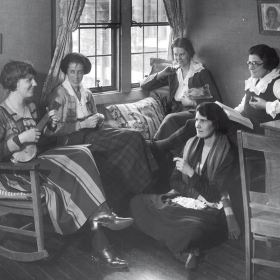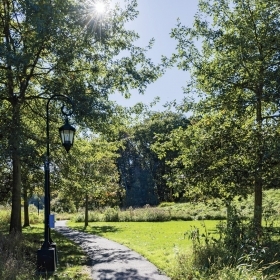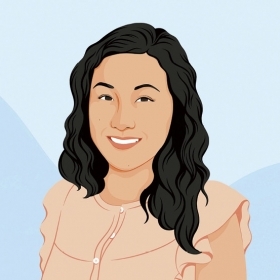Photo by Amos Chan
In mid-March, as the coronavirus raced throughout the United States, Amy Banzaert found herself in a race of her own: one against the clock as she rushed to transition her hands-on, project-based engineering course to a virtual format. Days before Wellesley announced classes would move online, Banzaert scrambled to build engineering kits that students could take with them when they left. Forgoing sleep, she spent late nights in her lab, grappling with seemingly impossible questions: Should she buy more equipment? If she did, would it arrive in time? How much could students transport? Was some equipment too dangerous to use unsupervised?
Ultimately, Banzaert decided to keep it simple (and skip the soldering tools), outfitting each kit with materials already in her lab: A LEGO robot controlled by an Arduino microcontroller, plus another system to model thermal dynamics. She also included lab printouts and basic supplies like scissors. “It was very unclear what was going to happen, and so I felt like I had to prepare for any reality, making very few assumptions about where my students would be ending up,” Banzaert explains.
Banzaert, the director of engineering studies, has been at Wellesley since 2012. “My role is to be the one faculty member who teaches engineering—it’s a pretty unique role that I adore,” she says. However, even her years of teaching experience could not have fully prepared her for teaching Fundamentals of Engineering remotely.
Transitioning entirely to Zoom, the course continued to meet for almost three hours two times a week. During each session, Banzaert briefly discussed key concepts covered in readings done before class—but rather than lecturing, she borrowed from existing online lectures from various sources, pausing to comment as needed. Her seven students then divided into “breakout rooms” to work through labs together. For example, during labs on how to maintain the temperature of a cup of coffee, students first used software to create a virtual model of the thermal system, and then used their kits to build and manipulate a physical model.
Supporting students remotely during labs was as challenging as it sounds. For one, Banzaert couldn’t subtly eavesdrop to gauge when students need help. “I had to get over the weirdness of jumping into a breakout room and being like, ‘Surprise, here I am,’” Banzaert explains. Plus, troubleshooting and debugging is difficult through a screen—although her students figured out how to connect their phones to Zoom, and use their cameras to show Banzaert their kits. “I feel like every class [was] a combination of mishaps and victories,” Banzaert says, as she also dealt with logistical glitches ranging from poor connections to forgetting to unmute.
Students were also under considerable stress, as many had taken on extra responsibilities, and all were dealing with the anxiety of the pandemic. “Students are in really different places, both physically but also emotionally,” Banzaert says, so she tried to adapt her class to their individual needs—something Wellesley addressed by making courses pass/fail. Banzaert and her husband—an MIT professor—balanced teaching with caring for their two children. “I am not used to having my kids interrupt my labs, but that is just inevitable—we do our best!” Banzaert says. On the flip side, Banzaert enjoyed sharing more of her life with her students, and seeing more of theirs.
There were also other positives: Virtual teaching forced Banzaert to communicate more clearly. On campus, she says, she can revisit a confusing lecture concept in lab, “whereas online, if something’s confusing, that can mean absolutely zero engagement.” Plus, because the transition online happened halfway through the semester, Banzaert and her students were already close, making their Zoom sessions less awkward. In fact, Banzaert noticed that some of her quieter students spoke up more on Zoom. “The benefits of being in person are huge, and we’re really missing them,” Banzaert says. “We’re just trying to make the best of our hard situation and see the silver linings.”
Perhaps the biggest silver lining is how the Wellesley community has come together during a difficult time. “That first week back, everyone was just thrilled to be with each other again,” Banzaert says. “It was really heartwarming to see how much we needed each other, and how much we needed the normalcy of our semester to get back to having a teaching and learning relationship.”








We ask that those who engage in Wellesley magazine's online community act with honesty, integrity, and respect. (Remember the honor code, alums?) We reserve the right to remove comments by impersonators or comments that are not civil and relevant to the subject at hand. By posting here, you are permitting Wellesley magazine to edit and republish your comment in all media. Please remember that all posts are public.